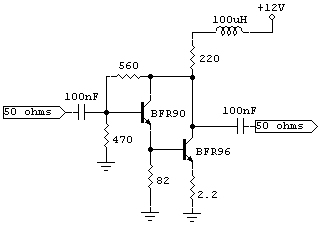neazoi
Advanced Member level 6
Hello,
I have a 3KHz-50MHz signal generator and I would like to amplify it's 2.3mw output to +7dbm. I am looking for a broadband amplifier that can do this. The mmics like mar2 mar6 etc have a max output of 1-2mw tho these are not good I think. Any other solution?
I have a 3KHz-50MHz signal generator and I would like to amplify it's 2.3mw output to +7dbm. I am looking for a broadband amplifier that can do this. The mmics like mar2 mar6 etc have a max output of 1-2mw tho these are not good I think. Any other solution?
